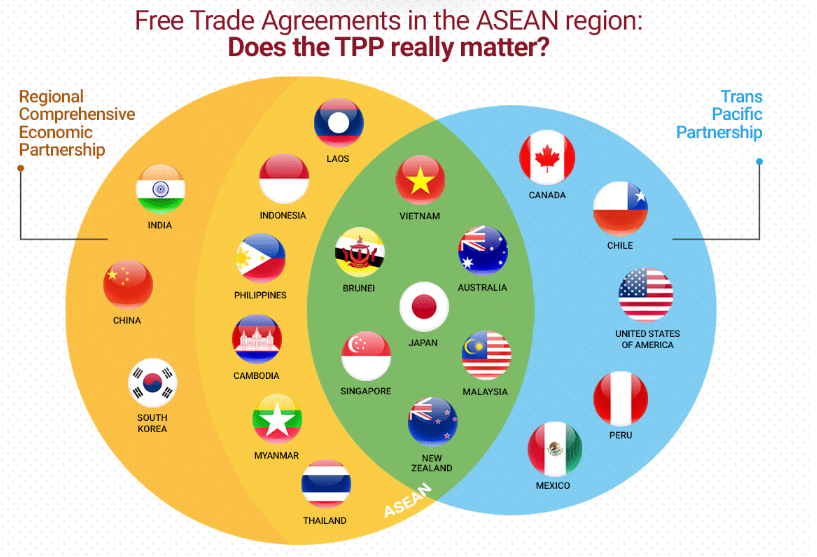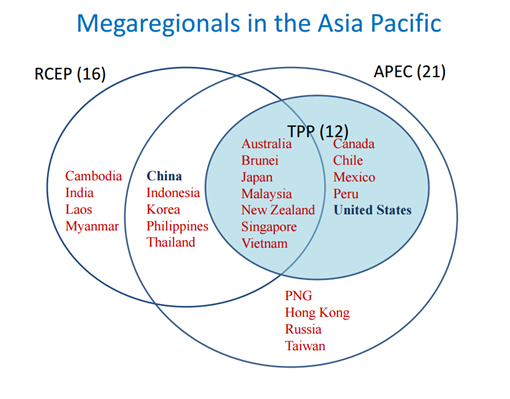
According to the Los Angeles Times, in Asia, "China looks like the winner after [the] scuttling of Trans-Pacific Partnership (TPP)".
The TPP came hand in hand with a vision about what the world order looked like, said Danny Quah, Li Ka Shing Professor of Economics at the Lee Kuan Yew School
of Public Policy (LKYSPP). It had to do with America being in the center writing the rules of the game that benefit everyone.
In the wake of U.S. withdrawal from the TPP,Singapore's Ministry of Trade and Industry expressedthat"Singapore is committed to pursuing a rules-based trading system and greater regional integration. The agreement that the TPP parties has negotiated is
one such pathway to achieve stronger trade linkages that will promote growth opportunities and job creation in all the member countries."
Without the participation of the U.S., the TPP agreement as signed cannot come into effect. However, there are other regional integration initiatives still ongoing, including the Regional Comprehensive Economic Partnership (RCEP) and the proposal for
a Free Trade Area of the Asia-Pacific. (refer to Channel News Asia's report)
Long live mega-regionals?

In his presentation entitled "mega-regionalism and developing countries", Michael G. Plummer, Director of
SAIS Europe, commented that mega-regional trade agreements (MRTAs) have emerged as a potential force for global economic integration.
Razeen Sally, associate professor at LKYSPP, who facilitated the presentation on 16 November 2016, points out:
"For the past half century, trade has made substantial contributions to development in many economies, making a vibrant trading system a global priority. Yet world trade growth is now decelerating, while the complex challenges of today's trading environment
and divergences across WTO members have stymied progress on further liberalization at the WTO. In this vacuum, ambitious mega-regional trade agreements (MRTAs) are now emerging as a possible answer to the global stalemate, with the Asia-Pacific region
serving as their main incubator. The proposed MRTAs are bound to affect all developing economies, even those not participating in them; they will create and, to a lesser extent, divert trade, and will establish new rules for deeper integration."
With the exit of the U.S. from the ring of TPP, the China-backed RCEP seems to be the multi-lateral trade option Asia will be falling back on.
Plummer also reiterated why Asian countries will still opt for trade by listing out the reasons why trade is still the way to go.
Trade is good for growth and development
Empirical work over the past two decades confirms that trade has a positive effect on growth and development:
- Trade leads to growth; trade-induced growth leads to improved employment
- Particularly relevant to developing economies with unemployment, underemployment, and/or large informal sector
- Trade has important productivity spillovers via exports, imports and links to foreign direct investment (FDI)
- Trade reduces poverty (Winters, et. al, 2004) albeit dependant on the applied context
- Production networks driving trade in Asia have great potential to plug low-income countries into the regional and global markets, help small medium enterprises, and reduce poverty
- Macro-environment and other policies that create greater stability and improve the lot of the poor need to be prioritised
- Importance of capacity building, active government policies to maximize gains in developing economies
To read Michael Plummer's presentation, click here.